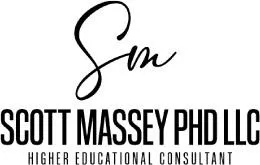BLOG
SCOTT'S THOUGHTS

Identifying STARS: A Blueprint for PANCE Success
Dr. Westphall felt a wave of anxiety as he scanned his students’ recent PANCE scores. Of the 30 students in his class, six had failed the exam on their first try. For a program known for high first-time pass rates, this was more than a setback—it was a crisis.
The question wasn’t just what went wrong, but how to prevent it from happening again. The solution? A proactive system focused on identifying and supporting Students At Risk (STARs).
Early Detection = Better Outcomes
Success starts with early identification. By catching at-risk students early, programs have time to offer targeted support and remediation. It’s not about adding more work to already-burdened faculty—it’s about prioritizing student outcomes. Regular check-ins and a structured remediation plan ensure students stay on track and address weak areas before it’s too late.
Why It Matters
Your students’ success is a reflection of your program. First-time PANCE pass rates don’t just affect your statistics—they influence reputation and accreditation. According to ARC-PA guidelines, any cohort with a pass rate below 85% must submit a comprehensive performance analysis, looking at factors such as admissions data, course performance, remediation results, and student feedback.
STAR Risk Levels and Assessment Tools
Using data like GPA, End of Rotation exams, and PACKRAT scores, students can be placed into four risk levels:

Faculty advisors tailor remediation contracts for high- and critical-risk students, focusing on study plans, skill-building, and one-on-one mentoring.
Culture Shift: Support Over Stigma
One of the biggest challenges? Changing the culture. Students may fear being labeled “at risk,” but reframing support as mentorship rather than punishment changes the game. Confidentiality and inclusivity are key—when everyone feels like success is a shared goal, students thrive.
The Results Are In
Thanks to this proactive approach, all six students who initially failed the PANCE passed on their second attempt. More importantly, the strategy helped future cohorts take ownership of their learning and embrace the support systems in place.
By reaching for the STARS, this program didn’t just recover—it grew stronger.

Identifying STARS: A Blueprint for PANCE Success
Dr. Westphall felt a wave of anxiety as he scanned his students’ recent PANCE scores. Of the 30 students in his class, six had failed the exam on their first try. For a program known for high first-time pass rates, this was more than a setback—it was a crisis.
The question wasn’t just what went wrong, but how to prevent it from happening again. The solution? A proactive system focused on identifying and supporting Students At Risk (STARs).
Early Detection = Better Outcomes
Success starts with early identification. By catching at-risk students early, programs have time to offer targeted support and remediation. It’s not about adding more work to already-burdened faculty—it’s about prioritizing student outcomes. Regular check-ins and a structured remediation plan ensure students stay on track and address weak areas before it’s too late.
Why It Matters
Your students’ success is a reflection of your program. First-time PANCE pass rates don’t just affect your statistics—they influence reputation and accreditation. According to ARC-PA guidelines, any cohort with a pass rate below 85% must submit a comprehensive performance analysis, looking at factors such as admissions data, course performance, remediation results, and student feedback.
STAR Risk Levels and Assessment Tools
Using data like GPA, End of Rotation exams, and PACKRAT scores, students can be placed into four risk levels:

Faculty advisors tailor remediation contracts for high- and critical-risk students, focusing on study plans, skill-building, and one-on-one mentoring.
Culture Shift: Support Over Stigma
One of the biggest challenges? Changing the culture. Students may fear being labeled “at risk,” but reframing support as mentorship rather than punishment changes the game. Confidentiality and inclusivity are key—when everyone feels like success is a shared goal, students thrive.
The Results Are In
Thanks to this proactive approach, all six students who initially failed the PANCE passed on their second attempt. More importantly, the strategy helped future cohorts take ownership of their learning and embrace the support systems in place.
By reaching for the STARS, this program didn’t just recover—it grew stronger.
Don't miss out on future events!
Subscribe to our newsletter

© 2025 Scott Massey Ph.D. LLC

